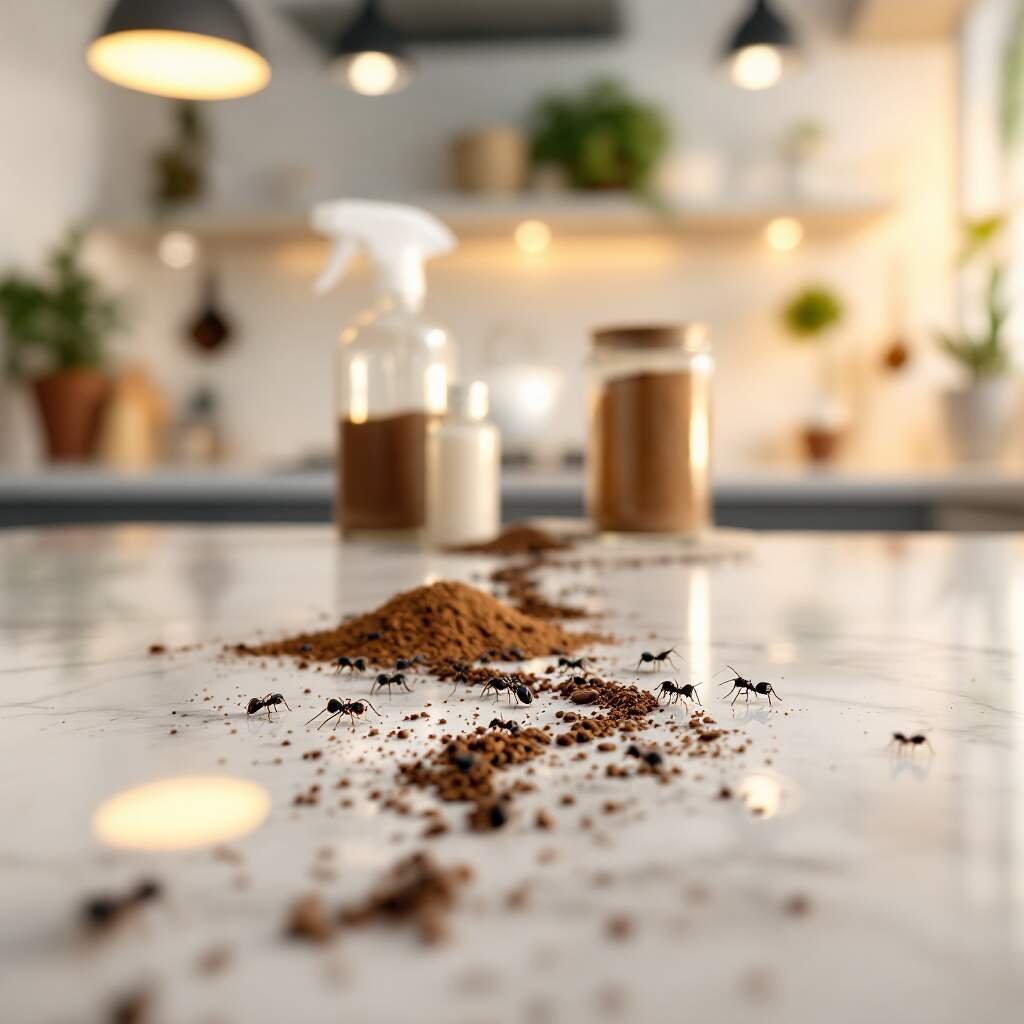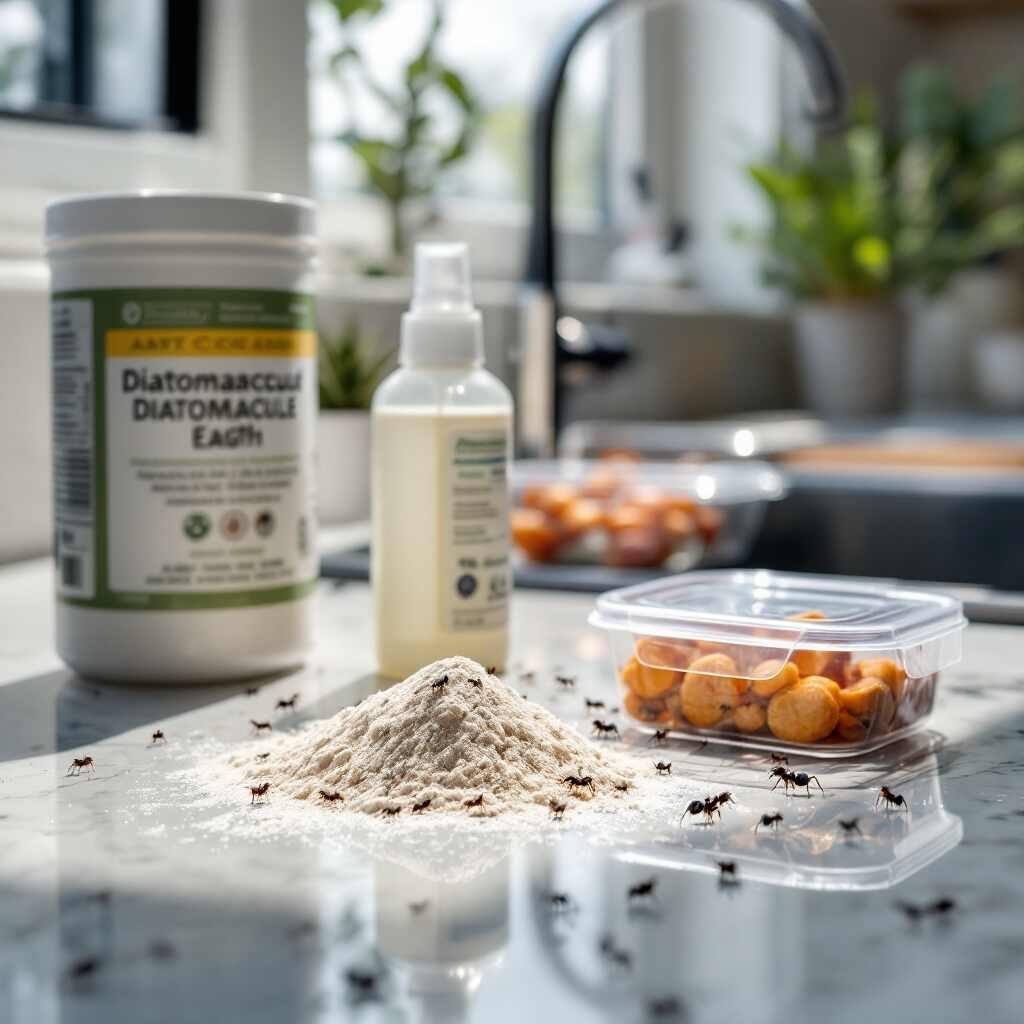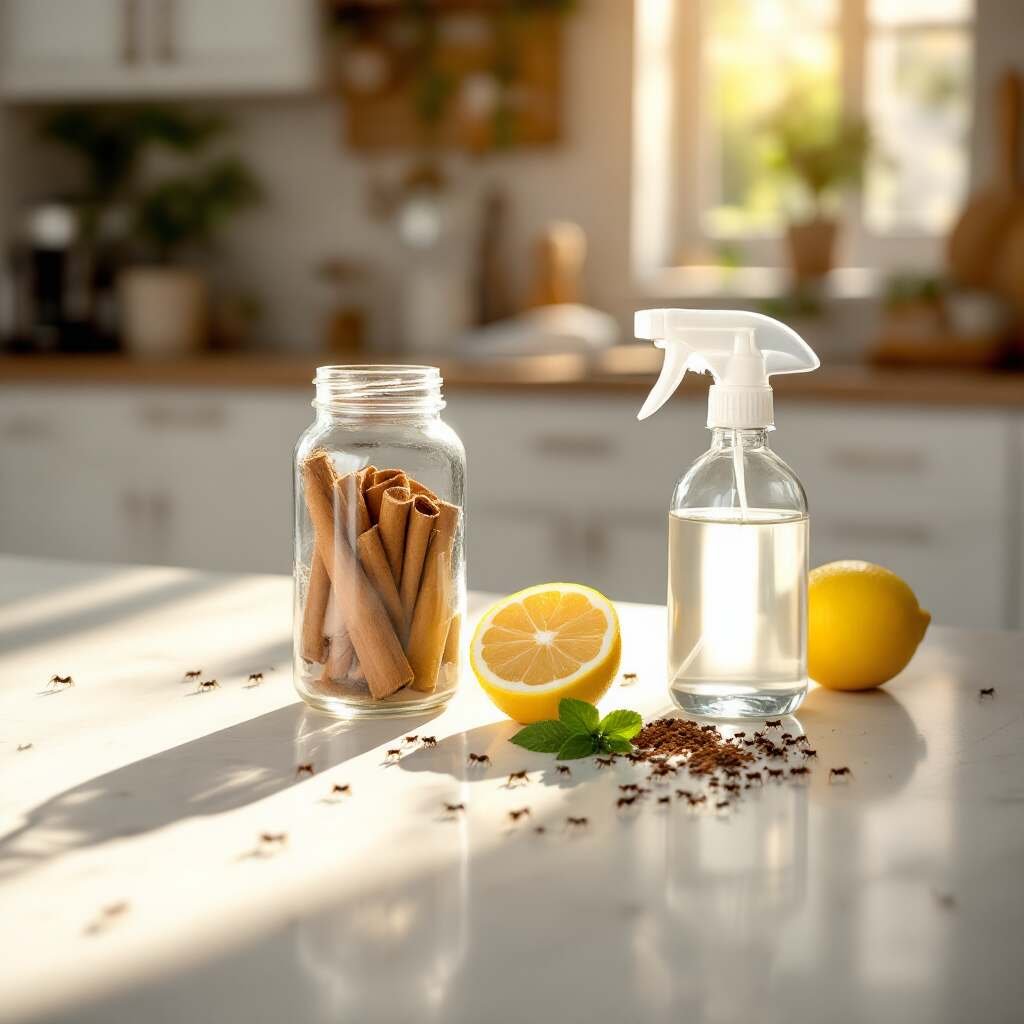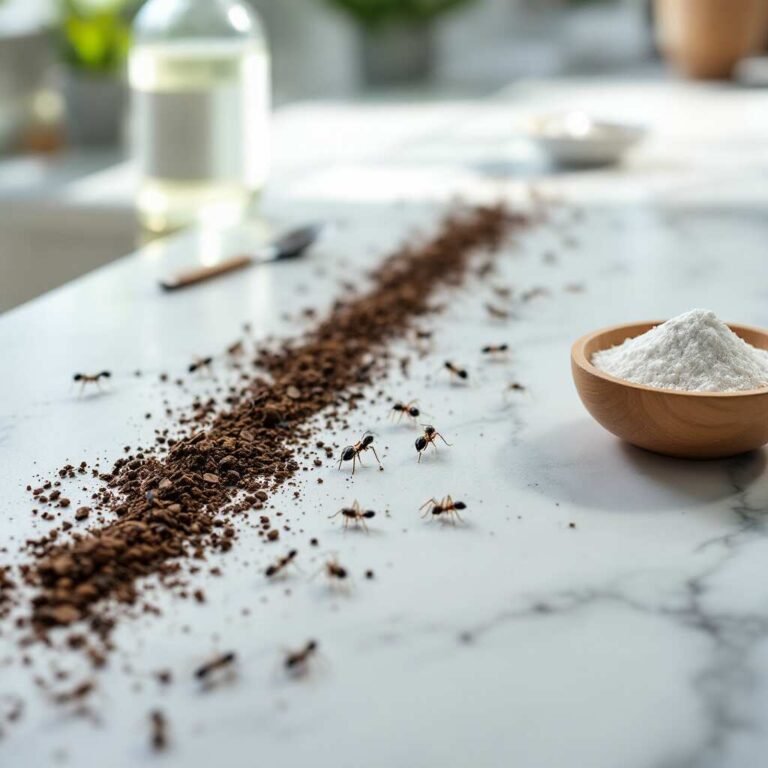Ants invading your kitchen can be one of the most frustrating and persistent household issues. You’re just trying to enjoy your space, and there they are—tiny, relentless, and seemingly unstoppable. If you’ve ever asked yourself, “How do I get rid of ants on my kitchen counter?”, you’re in the right place.
Understanding Why Ants Invade Your Kitchen
Ant infestations don’t happen randomly. Ants are drawn to specific conditions, and understanding what attracts them can help you eliminate the root cause of the problem.
What Attracts Ants to Kitchen Counters?
Your kitchen counter is a buffet for ants, and here’s why:
- Food Crumbs and Spills: Ants are highly attracted to even the tiniest crumbs or food particles. A drop of juice or a crumb from a cookie is enough to lure them in.
- Accessible Food Sources: Open cereal boxes, unsealed bags of sugar, and even pet food bowls are easy targets for ants.
- Water Sources: A leaky faucet, damp sink, or pet water bowl provides hydration for ants, especially in dry environments.
- Warmth and Shelter: Kitchen appliances, cabinets, and cracks in the walls offer warm and secure hiding spots for ants to build their colonies.
Common Entry Points for Ants
Ants are tiny, which means they can fit through almost any opening. Common entry points include:
- Cracks in Walls and Foundations: Even the smallest cracks can create a pathway for ants to enter.
- Gaps Around Windows and Doors: If your windows and doors aren’t sealed properly, ants can crawl right in.
- Plumbing Gaps: Openings around pipes and utility lines are also popular entry points.
Types of Ants Commonly Found in Kitchens
Different types of ants behave differently, and identifying the species can help in targeting them effectively. Some common kitchen invaders include:
- Odorous House Ants: These ants emit a distinct smell when crushed and are attracted to sugary foods.
- Carpenter Ants: Larger in size, these ants can cause structural damage as they chew through wood to create nests.
- Sugar Ants: Known for their love of sweet substances, these ants are often found near sugary spills or open containers.
Immediate Actions: How Do I Get Rid of Ants on My Kitchen Counter?
If you’re dealing with an ant invasion right now, here’s what you can do to eliminate them immediately.
You may also read (trash can to your house)
Clean and Remove Food Sources
Ants thrive on easy access to food, so your first step is to eliminate their buffet:
- Wipe Down Kitchen Counters: Use a solution of soap and water to clean your counters thoroughly, removing any food traces or crumbs.
- Sweep and Mop the Floors: Ants often find food particles on the ground. A quick sweep and mop will help eliminate these.
- Store Food in Airtight Containers: Seal all food, including sugar, flour, and pet food, in airtight containers to make it inaccessible to ants.
- Clean Garbage Areas: Ensure your trash bin is covered tightly and emptied regularly, as it’s a common attraction for ants.
Kill Ants You See: Safe and Effective Methods
There are several DIY solutions to kill ants quickly and safely:
- Dish Soap and Water Spray: Mix a few drops of dish soap with water in a spray bottle. Spray it directly on ants to kill them instantly.
- White Vinegar Solution: Combine equal parts vinegar and water. Spray this on ant trails and wipe down surfaces to repel them.
- Lemon Juice Spray: Lemon juice disrupts ants’ scent trails. Mix fresh lemon juice with water and spray it around the affected areas.
- Baking Soda Paste: Combine baking soda and water to create a paste. Apply it to ant trails or cracks to kill ants effectively.
Pro Tip: Be cautious with chemical sprays in the kitchen, as these may contaminate food preparation areas.
Disrupt Ant Trails
Ants rely on pheromone trails to communicate and recruit more ants. To break this cycle:
- Wipe Down Trails: Clean surfaces with vinegar or soapy water to erase these scent trails.
- Repeat Cleaning: This step may need repeated multiple times to ensure the trails are completely gone.
Targeting the Colony: How to Get Rid of Ants for Good
Killing the ants, you see, isn’t enough—a colony nearby that likely needs to be addressed.
Find and Track the Ant Trail
Follow the line of marching ants to locate their entry point or nest. Look for cracks, gaps, or trails leading outside. Remember, killing visible ants is only temporary until the source is dealt with.
Use Ant Bait Stations
Ant baits are an effective way to target the colony:
- How They Work: Ants take the bait back to their colony, spreading the poison to others.
- Placement Tips: Place bait stations along trails, under appliances, and near entry points.
- Patience is Key: When using bait, don’t kill ants on contact—let them carry the bait back to their nest.
- Switch Baits if Needed: If one bait doesn’t work, try switching to another type with a different active ingredient.
Natural and Chemical Colony Killers
If bait isn’t enough, consider these options:
- Diatomaceous Earth: A safe, non-toxic powder that kills ants by dehydrating them. Apply it around cracks and crevices.
- Borax Solutions: Mix borax with sugar and water to create a bait. Use it sparingly, as borax can be toxic to pets and children.
- Professional-Grade Products: Non-repellent insecticides and ant gels can be used for severe infestations.
MethodEffectivenessSafety
Diatomaceous Earth High for small colonies and Safe for pets/kids
Borax Solution Moderate Use with caution
Non-Repellent Insecticides Extremely effective Professional use only
Sealing and Preventing Re-Entry
Once you’ve eliminated the ants, it’s time to seal up entry points and prevent future invasions.
Seal Entry Points
Inspect your kitchen and home for gaps or cracks:
- Caulk Cracks: Use caulk to seal cracks in walls, floors, or foundations.
- Seal Gaps in Windows/Doors: Install weatherstripping or door sweeps to close gaps.
- Check Plumbing Areas: Seal any openings around pipes or utility lines.
Ongoing Kitchen Hygiene
A clean kitchen is the best defense against ants:
- Wipe counters and sweep floors daily.
- Store all food (including pet food) in sealed containers.
- Keep sinks dry and dishes washed promptly.
Outdoor Prevention Tips
Prevent ants from entering your home by addressing outdoor factors:
- Trim vegetation away from your house.
- Keep garbage bins tightly sealed.
- Manage outdoor ant nests by applying ant repellents or natural deterrents.
Natural Remedies and DIY Solutions
If you prefer natural alternatives, there are plenty of options available.
Essential Oils as Ant Deterrents
Certain essential oils can repel ants effectively:
- Peppermint Oil: Mix with water and spray around entry points.
- Tea Tree Oil: Add a few drops to a cotton ball and place it near ant trails.
- Lemon Oil: Use as a spray for counters and cracks.
Other Home Remedies
Here are some additional DIY options:
- Cinnamon Powder or Sticks: Place along windowsills or near cracks.
- Coffee Grounds: Sprinkle around ant trails to repel them.
- Cucumber Peels: Ants dislike the smell of cucumbers.
Note: While natural remedies are effective for small infestations, larger colonies may require stronger solutions.
When to Call a Professional Exterminator
Sometimes, it’s best to leave the problem to the experts.
Signs You Need Professional Help
- Persistent or large-scale infestations.
- Ants nest inside walls or appliances.
- DIY solutions fail to solve the problem.
What to Expect from Professional Pest Control
- A thorough inspection to identify the species and source.
- Professional-grade treatments like baits or sprays.
- Follow-up visits to ensure the infestation is under control.
You may also read (category cleaning)
